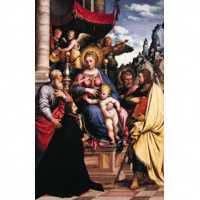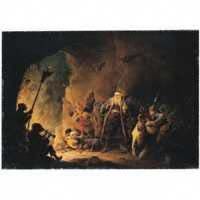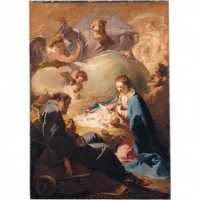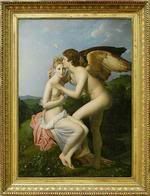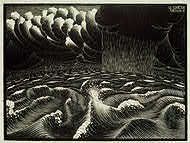Activity 11: Peroids and Cultures
The period an artwork is categorized in depends on when the artwork was created. According to our textbook periods consist of at least over one hundred years (Getlein 421.) Different periods were inspired by the different times and places that the artist lived. The artist culture, a stage of civilization or society (powerpoint), also affects the qualities defined in different periods because the artist's everyday life will impact his artwork. Different time periods will inspire artist to create in particular styles. For instance, our book describes the Rococo period as an art movement in the eighteenth century that features "decorative motifs" , including rocks and shells, on furniture and architecture.
Horace Vernet's "Hunting in the Pontine Marshes", 1833, oil on canvas was painted in the eighteenth century. Although this painting was painted in Italy, Vernet was a French artist (National Gallery.). This particular painting could be considered in the Romantics period. Our textbook explains romantics created and explored the claims of emotions, intuition and most importantly imagination (Getlein 507.) Among many artist in this period, Vernet glorified "awe inspiring landscapes" (507.) Vernet explained this was an imaginary place where humans were too minuscule to disrupt nature (National Gallery.)
Martin Johnson Heade's "Cattleya Orchid and Three Brazilian Humming Birds", 1871, oil on wood, was also painted in the eighteenth century, it embodies a different period. Heade was an American artist who was inspired to paint this realistic painting after visiting South America and observing the hummingbirds (National Gallery.) This painting could be considered part of the Realist period. As our book defines, Realism depicted the everyday and ordinary life unlike the romantics(508) This painting shows with great detail an everyday view of an orchid in South America.
While both artist painted their artworks in relatively the same time period, their cultural backgrounds and inspired styles belong to two separate eras in art. While Vernet inspires imagination, Heade inspired nature's true beauty.
Works Cited
Getlein, Mark Living With Art, Eighth Edition, New York 2008.
Brew, Charlanne Periods and Cultures 101, sample essay, powerpoint presentation.
National Gallery of Art http://www.nga.gov./
Horace Vernet's "Hunting in the Pontine Marshes", 1833, oil on canvas was painted in the eighteenth century. Although this painting was painted in Italy, Vernet was a French artist (National Gallery.). This particular painting could be considered in the Romantics period. Our textbook explains romantics created and explored the claims of emotions, intuition and most importantly imagination (Getlein 507.) Among many artist in this period, Vernet glorified "awe inspiring landscapes" (507.) Vernet explained this was an imaginary place where humans were too minuscule to disrupt nature (National Gallery.)
Martin Johnson Heade's "Cattleya Orchid and Three Brazilian Humming Birds", 1871, oil on wood, was also painted in the eighteenth century, it embodies a different period. Heade was an American artist who was inspired to paint this realistic painting after visiting South America and observing the hummingbirds (National Gallery.) This painting could be considered part of the Realist period. As our book defines, Realism depicted the everyday and ordinary life unlike the romantics(508) This painting shows with great detail an everyday view of an orchid in South America.
While both artist painted their artworks in relatively the same time period, their cultural backgrounds and inspired styles belong to two separate eras in art. While Vernet inspires imagination, Heade inspired nature's true beauty.
Works Cited
Getlein, Mark Living With Art, Eighth Edition, New York 2008.
Brew, Charlanne Periods and Cultures 101, sample essay, powerpoint presentation.
National Gallery of Art http://www.nga.gov./

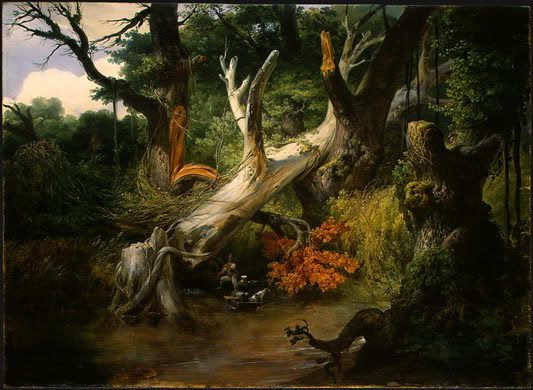 "Hunting in the Pontine Marshes" Horace Vernet, 1833, oil canvas
"Hunting in the Pontine Marshes" Horace Vernet, 1833, oil canvas

